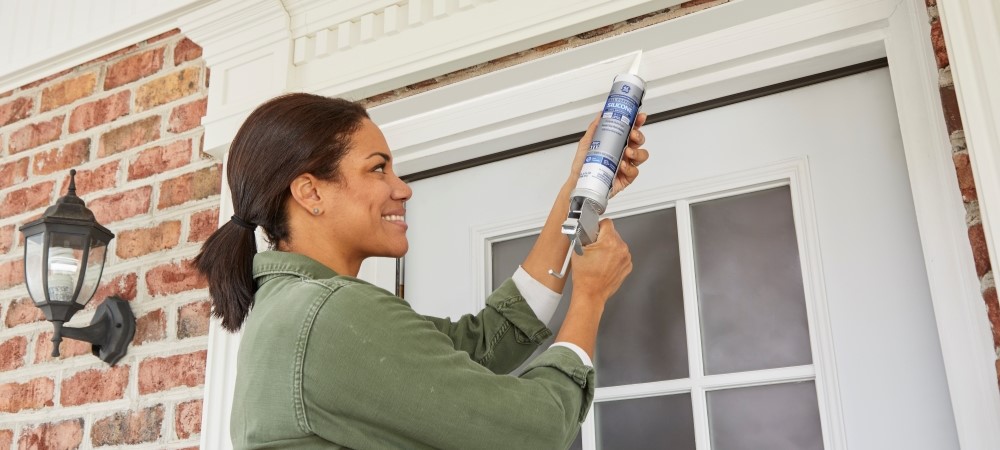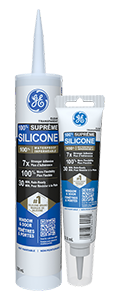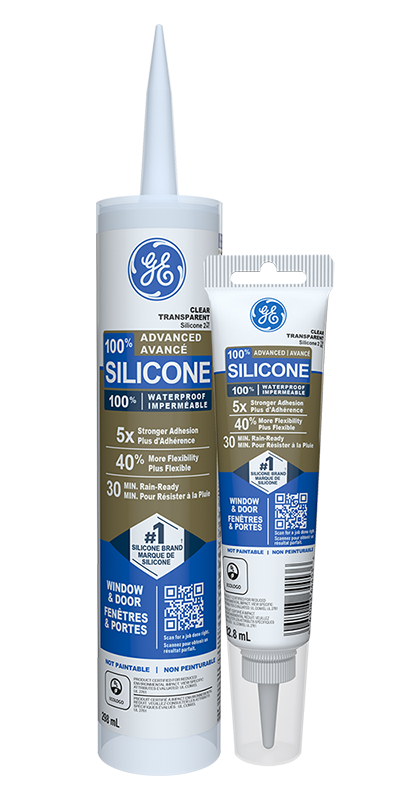Note: This article is provided as a general guide and is not intended to replace product-specific installation procedures; always follow applicable manufacturer’s instructions. Depending on your home’s age and condition, location within the home, and other potential factors, repairs and/or upgrades or other services may be necessary before the beginning and/or completion of your project that may involve the services of a home improvement professional. This article does not include advice about local building codes or related inspections.
A doorway welcomes friends and family to your home, but it shouldn’t welcome pests, moisture, and mould. It should be an entryway for those you care about and the first line of defense against unwelcome weather and bugs. By using door sealant, you can protect your home and its insides by sealing small gaps that can quickly become big problems.
We bring you our favourite products for sealing doors, plus tips the pros use to ensure an airtight seal.
Where to apply door sealant for maximum protection
Silicone sealant goes on door frames after installation. You can place it between the frame and the wall to give the frame an extra secure seal. You apply the sealant for doors to both the interior and exterior sides of the door .
If in doubt, ask yourself whether there’s a gap or if there is potential for a gap. If there is, you most likely need sealant, such as around a door frame.
The exception would be the door itself. Your door would not use silicone sealant since it needs an easy range of motion. That’s why you would use a weather strip. A weather strip forms a seal when the door is closed but can move with it when it’s open.
If your door has windows, you may want to use silicone sealant to fill in any gaps those windows might leave for air seeping in, mould growth, and pests.
How door sealant protects your frame and door
Do you need to use front door sealant on your house?
That decision is ultimately yours, but here are the benefits you’ll gain by using a door frame sealant.
- Moisture resistance: One of the most significant benefits of sealing your door is preventing moisture buildup. No matter how small, the gap between your frame and wall can capture moisture, especially on the outside. Over time, that moisture will turn to mould, which can cause much more extensive damage.
- UV protection: Sunlight tends to degrade materials over time. Sealants can prevent some sun damage, especially around the edges and cracks where the frame is already weak.
- Temperature protection: Materials can also grow or shrink as temperatures change. This is often a cause of cracking. A flexible silicone sealant moves with the door frame, holding it secure and supporting it through temperature fluctuations, minimizing the cracks that otherwise result.
- Aesthetic preservation: Sealed doors look more aesthetic than unsealed doors. You can fill in unsightly gaps and smooth the transition from frame to door. This seal keeps the door looking well-maintained and aesthetic for longer.
- Pest protection: While that small gap may seem insignificant, that’s all it takes for pests to enter your home. Bugs, such as ants, or mice will find any gaps, especially around doors, to invade your home. You can keep out more of those pests from your home by sealing those gaps.
Sealing your door’s interior and exterior frame prevents moisture damage, protects against UV damage, supports the frame during temperature changes, keeps out pests, and improves your door’s aesthetic.
5 steps to apply door sealant that will last
Follow these five steps to apply door sealant like a pro.
-
Choose the right sealant
Not all sealants are the same. Pros carefully choose the best sealant for their surface and desired results.
In this case, because the sealant goes outside in addition to inside, you will want a weather-resistant sealant for door frames. You will also want a sealant compatible with materials commonly found on door frames, especially if you have windows in the door you also plan to seal.
GE sealant’s Supreme Silicone Window & Door sealant checks all the boxes. It’s durable, weatherproof, and has a lifetime of mould-free protection. Due to its extra flexibility, it lasts longer and can change with extreme Canadian temperatures.
Because it is a silicone sealant, you can’t paint over it. However, it comes in six colours, matching your door and frame for a quality finish. It can even adhere to high-end metal finishes like chrome, bronze, and nickel.
-
Prepare the surface
Before jumping right into applying the door silicone sealant, take time to clean the surface area. You want to remove dirt and grime that might compromise the sealant’s adhesion. You will also remove old paints, varnishes, and silicone.
If you have a wooden door frame, we recommend sanding it down if it has any coatings that might prevent the sealant from fully adhering to the door frame.
You will then wait till the surface is completely dry after cleaning before beginning your sealant process.
You may want to apply painter’s tape on areas you don’t want to accidentally drip sealant on, such as hardware or glass panels. It also helps keep a straight, clean line around the frame.
-
Apply the sealant
To open your door sealant, cut at an angle. The angled cut provides more control over the bead. How high up the tube you cut determines how thick the bead is.
After cutting the tip, puncture the inner seal.
A door frame is a big job and may require some reaching. Using a cartridge in a caulk gun will give you the best grip and results.
Apply the silicone door sealant in a small, steady bead the size of the gap you are sealing. After applying the bead, run a gloved finger across it to help it fully adhere.
-
Allow ample time to dry
Silicone sealant has varying dry times, so always check your brand’s specific dry time.
A quality sealant like GE helps protect your door by being rain-ready in just 30 minutes. You don’t need to sweat the weather, even as the sealant cures as rain won’t hurt it after that thirty-minute mark. Its total cure time is about 24 hours. After that time, it has reached its maximum strength.
-
Regularly maintain the area
Because door frame sealant is exposed to the elements, it will degrade over time. Quality sealants may last the lifetime of the door.
To help prolong the sealant’s lifespan, inspect the door for damage and grime buildup. If there is dirt building up, clean the area thoroughly. If you need to reapply the sealant, remove the old sealant first before adding the new one.
Is your door frame ready for all types of weather and pests? Seal those small gaps before they become large, costly repairs to enjoy your warm, safe home interior. GE sealant wards off any pest outside your door that threatens to disrupt that peace.
Find a store near you that carries GE sealant’s silicone door sealant.



